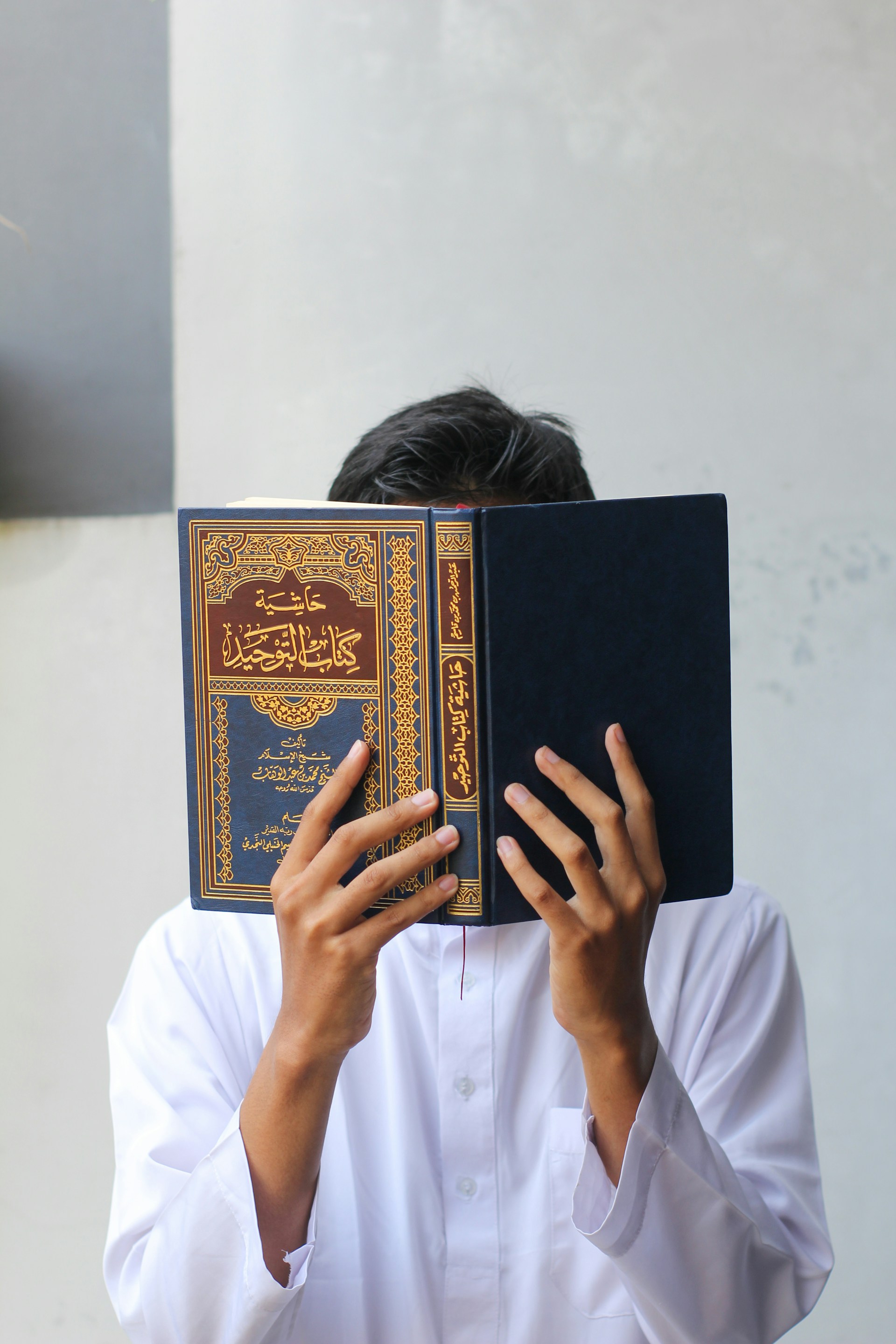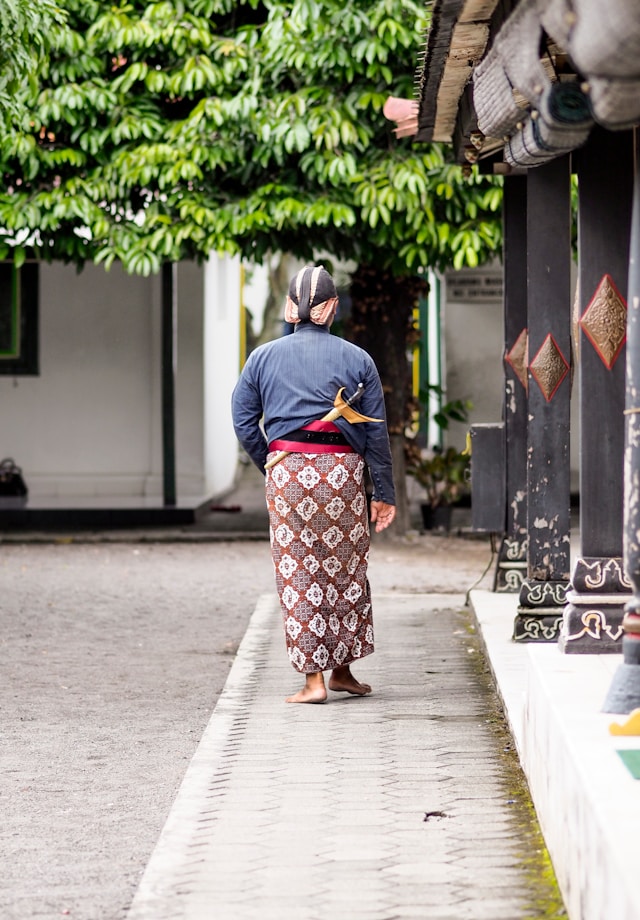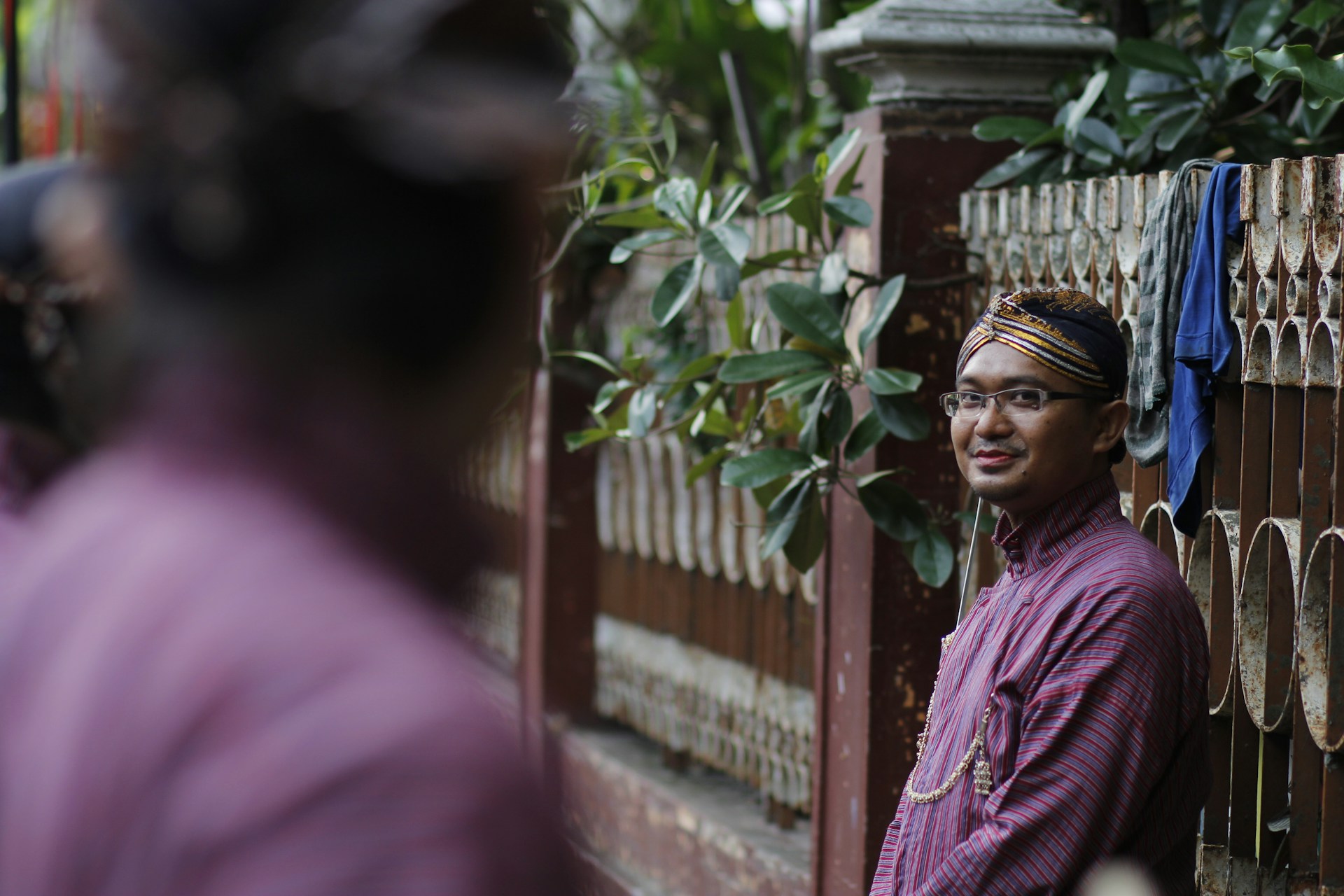5 Right Upper Eye Twitches According to Primbon: Meaning and Medical Explanation
Learn the meaning of right upper eye twitches according to Javanese primbon and medical explanations. Discover the causes, how to address it, and when to see a doctor.

Kapanlagi.com - In Javanese society, primbon has become a part of the tradition passed down through generations. However, as knowledge advances, many begin to question whether primbon is true and if it can be used as a guideline in modern life. Primbon is often used to determine auspicious days, matches, and even a person's fate. But is all of this merely a traditional belief or is there a logical basis behind it?
The question is primbon true or not cannot be answered in black and white. On one hand, some believe in its accuracy based on ancestral experience. On the other hand, there are those who regard it as a myth without scientific basis. This article will help you delve deeper into the facts, culture, and controversies surrounding primbon.

Old book illustration of the primbon (credit: unsplash)
Primbon is a heritage book from Javanese ancestors that contains guidelines for determining attitudes and actions in life. Literally, the word primbon comes from the Javanese word "rimbu" which means a collection of various important records. This book contains predictions, calculations of auspicious days, dream interpretations, human characteristics, and various other traditional Javanese knowledge.
The history of primbon cannot be separated from the development of Javanese culture. Experts estimate that primbon began to be compiled during the Mataram Islamic kingdom around the 17th century. However, its roots can be traced back to the pre-Islamic era in Java. During the Hindu-Buddhist period, the Javanese people were already familiar with various systems of time calculation and predictions, such as pawukon which divides a 210-day cycle into 30 wuku.
The arrival of Islam in Java had a significant impact on the development of primbon. The saints and spreaders of Islam tried to accommodate local traditions with Islamic teachings. As a result, many Islamic elements entered into primbon, such as the use of Hijri month names and prayers in Arabic.
The peak development of primbon occurred during the Mataram Sultanate. Sultan Agung, who ruled from 1613-1645, ordered the compilation of a Javanese calendar system that combined Islamic and Javanese elements. This system later became the basis for calculations in primbon.
Primbon contains a wide range of traditional Javanese knowledge. Some of the main topics commonly discussed in primbon include:
In addition, primbon also contains various mantras, prayers, and rituals for different purposes. For example, love mantras, protection from calamities, or attracting fortune. However, the use of such mantras is often considered to deviate from religious teachings.
Although it may seem mystical, much of the content of primbon is actually local wisdom that has been passed down through generations. For instance, the seasonal calendar for agriculture or traditional healing guidelines that have been scientifically proven to be effective.

Someone is reading a holy book (credit: unsplash)
The use of primbon remains a controversy from a religious perspective, especially Islam as the majority religion in Indonesia. Some scholars firmly prohibit the use of primbon because it is considered to lead to shirk (associating partners with Allah). However, there are also those who permit it as long as it does not contradict the faith.
Arguments against primbon include:
Meanwhile, arguments in favor of primbon include:
Nahdlatul Ulama (NU) as the largest Islamic organization in Indonesia tends to be moderate in addressing primbon. According to NU, primbon can be used as long as it does not contradict Islamic law and is not believed to be absolutely true. However, it is still advised to be cautious to avoid falling into shirk.
From the perspective of modern science, much of the content of primbon is difficult to empirically prove. Some scientific criticisms of primbon include:
However, some aspects of primbon actually have valid scientific foundations. For example:
Scientists suggest looking at primbon critically and objectively. Rational and beneficial aspects can be preserved, while unreasonable elements should be discarded.

A man wearing Javanese traditional clothing (credit: unsplash)
The use of primbon still generates pros and cons in society to this day. Some controversial issues related to primbon include:
Supporters of primbon argue that:
Meanwhile, opponents of primbon argue:
This debate seems likely to continue as times evolve. A constructive dialogue between various parties is needed to find common ground in addressing primbon.
Along with the development of the times, the use of primbon has undergone various changes. Some phenomena related to primbon in the modern era include:
On one hand, digitalization makes access to primbon easier. However, on the other hand, it also has the potential to lead to misuse. Many fake "primbon experts" have emerged, exploiting social media to deceive the public.
Some Javanese cultural communities are striving to preserve primbon in a more contextual manner. For example, by reinterpreting the contents of primbon to be more in line with contemporary developments. Or using primbon as a means of character education and local wisdom.
Among academics, primbon is starting to be studied as a source of traditional Javanese knowledge. Some higher education institutions have even included primbon in the curriculum of Javanese cultural studies. This is expected to bridge the gap between tradition and modernity.

A man is wearing traditional Javanese clothing (credit: unsplash)
Regardless of the pros and cons, primbon remains a part of life for some Indonesian people. Here are some tips for responding to primbon wisely:
The most important thing is to maintain a balance between respecting tradition and thinking critically. Primbon can be seen as a cultural wealth, but it should not be followed blindly. With a wise attitude, we can benefit from primbon without getting trapped in superstition.
As time progressed, many myths and facts circulated around primbon. It is important for us to distinguish between myths and facts to avoid being trapped in false beliefs. Here are some myths and facts surrounding primbon:
Myth: Many believe that predictions in primbon are always accurate and proven true.
Fact: The accuracy of primbon cannot be scientifically proven. Many predictions are general in nature, allowing them to be interpreted according to one's desires. Even if some are proven "true," it could be due to coincidence or self-fulfilling prophecy (predictions that come true because people believe in them).
Myth: There is a belief that primbon originates from revelations or inspirations from God.
Fact: Primbon is the result of accumulated observations and human experiences collected over many years. There is no evidence that primbon comes from divine revelation.
Myth: Many believe that ignoring primbon's guidance will bring misfortune or disaster.
Fact: There is no proven cause-and-effect relationship between ignoring primbon and the arrival of misfortune. In Islam, good and bad come by the permission of Allah, not because of primbon.
Myth: Some people consider primbon as part of Islamic teachings due to the Islamic elements within it.
Fact: Primbon is not a part of Islamic teachings. Although there are elements of Islam adopted in several versions of primbon, this is more a result of cultural acculturation than original Islamic teachings.
Myth: There is an assumption that all scholars absolutely prohibit the use of primbon.
Fact: Scholars' views on primbon vary. Some strictly prohibit it, while others allow it as long as it is not used as a primary guideline and does not contradict faith.
Primbon is a cultural heritage that has existed since the pre-Islamic era in Java. It is part of Indonesia's cultural wealth that should be preserved as knowledge, even if it does not have to be believed absolutely.
After the arrival of Islam in the archipelago, primbon experienced acculturation with Islamic teachings. Some versions of primbon incorporate Islamic elements such as prayers in Arabic or Islamic concepts adjusted to local understanding.
Although still believed by some in society, primbon is not the only guideline for life. Many people use primbon only as one reference, not as the primary basis for making decisions.
Primbon is not something static. With the development of time, the content of primbon also undergoes changes and adjustments. Even now, digital versions and primbon-based applications are emerging.
Regardless of the beliefs surrounding it, primbon has important historical value. It reflects the mindset and perspective of the Javanese people of its time, and serves as a witness to the journey of Javanese culture from era to era.

Someone is reading a holy book (credit: unsplash)
The scholars have diverse views regarding the primbon law in Islam. Here are some fatwas and opinions of scholars related to primbon:
MUI has not issued a specific fatwa on primbon. However, in several related fatwas, MUI emphasizes that all forms of witchcraft and fortune-telling are haram. This is stated in MUI Fatwa Number 2/MUNAS VII/MUI/6/2005 regarding Witchcraft and Fortune-Telling.
Ustadz Abdul Somad believes that believing in primbon falls into the category of tiyarah (considering it unlucky), which is prohibited in Islam. He reminds Muslims not to get caught up in beliefs that could lead to shirk.
Buya Yahya stated that studying primbon as a cultural knowledge is not prohibited, but making it a guideline for life and believing in it absolutely is prohibited in Islam. He emphasized the importance of returning to the Qur'an and Hadith as the main guides.
Sheikh Uthaymeen issued a fatwa that believing in predictions, including those found in primbon, falls into the category of minor shirk. He reminded that only Allah knows the unseen and the future.
KH.Afifuddin Muhajir, one of the caretakers of the Salafiyah Syafi'iyah Sukorejo Islamic boarding school, opined that primbon containing calculations of good days does not contradict Islam as long as it is not believed absolutely and does not lead to shirk. He suggested understanding primbon as part of local wisdom.
The Permanent Committee for Scientific Research and Fatwa in Saudi Arabia asserts that any form of fortune-telling and belief in the stars (astrology) is haram and falls into the category of major shirk.
Sheikh Yusuf Al-Qaradawi opined that believing in predictions and calculations of good days is a form of superstition that is prohibited in Islam. He emphasized the importance of putting trust in Allah and striving in accordance with Sharia.
The Hisbah Council of Persis stated that believing in primbon and fortune-telling is haram. They base this fatwa on various verses of the Qur'an and Hadith that prohibit the practices of witchcraft and fortune-telling.
KH.Husein Muhammad, a kiai known for his progressive thoughts, argues that primbon as a cultural heritage can be studied as knowledge. However, he emphasizes that primbon should not be used as the main guideline in making life decisions.
Sheikh Abdul Aziz bin Baz, the former Grand Mufti of Saudi Arabia, asserts that believing in predictions and calculations of auspicious days is a form of shirk that is prohibited in Islam. He reminds Muslims to always adhere to the Qur'an and Sunnah.
Javanese Primbon, as a cultural heritage of Java that has existed for centuries, is still a part of the lives of some Indonesian people. However, in the context of Islam, the belief in primbon needs to be approached wisely and carefully.
Based on the discussions that have been outlined, several important points can be concluded:
Ultimately, as Muslims, we are encouraged to always hold fast to the Qur'an and Sunnah as the main guidelines in living life. Primbon can be appreciated as a cultural heritage and studied as knowledge, but it should not be used as an absolute reference in making life decisions.
What is most important is to prioritize ikhtiar (effort), tawakal (trust in Allah), and always seek guidance from Allah SWT in every step of life. Thus, we can lead our lives more purposefully, in accordance with religious teachings, while still appreciating local wisdom and the cultural heritage of our ancestors.
Find other interesting reviews at kapanlagi.com. If not now, when?
(kpl/psp)
Cobain For You Page (FYP) Yang kamu suka ada di sini,
lihat isinya
Learn the meaning of right upper eye twitches according to Javanese primbon and medical explanations. Discover the causes, how to address it, and when to see a doctor.
Ringing ears according to primbon are often associated with omens or premonitions. Check out the complete explanation from cultural and medical perspectives here.
Pineapple juice is not only refreshing but also beneficial for lowering cholesterol! However, for optimal results, continue to support it with a healthy lifestyle.
Here are healthy, practical mushroom vegetable stir-fry recipes that are suitable for daily menus. Each recipe includes a brief explanation, ingredients, and easy-to-follow cooking steps!
Here we present the complete lyrics, translation, and meaning of the song Harris J - My Hero so you can better understand the extraordinary message conveyed in this song.
For those of you who want to know how to advertise on Instagram. Here are the proper procedures for advertising on Instagram. Let's check it out, KLovers!
Curious about how to do it? Here’s how to temporarily delete your Instagram account easily and practically.
Here is a collection of 350 meaningful and inspirational quotes for children.
If you are interested in joining this dynamic Instagram community, this article will guide you through the registration process and initial use of the platform.
There are several ways to recover deleted Instagram chats. This article will thoroughly discuss various methods you can try.
Here is a collection of 350 sarcastic words for hypocrites that can make them realize.
Health is a precious gift that is often only realized after it is lost. Here is a collection of 350 wise words about health that can motivate and inspire us to always maintain our physical and mental health: